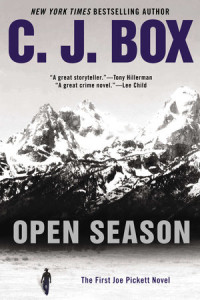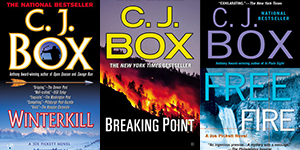
Tag Archives: suspense & thriller


From the Editor’s Desk: Linda Marrow, Editor of Try Not To Breathe
Editors get very passionate about books they work on – the Editor’s Desk series is his or her place to write in-depth about what makes a certain title special. Get the real inside-scoop on how books are shaped by the people who know them best.
The manuscript of Try Not To Breathe came in to me at about 9:30 one night and due to some happy intersection of title and description and still being too awake to go to bed, I made a cup of tea at about 10 and decided to glance at a page or two before turning in. At about 1 a.m. I forced myself away from the book for the night but could barely fall asleep – so full was my head and my heart of the story of the two young women Holly Seddon had created. When I was in the world on her pages I had that magical and delicious feeling every lifelong reader knows when your actual surroundings melt away and all you can see are the streets and houses the characters are seeing. I finished reading the manuscript the next night and for days after I couldn’t stop thinking about Amy and Alex and what both joined and separated them.
Hopefully without giving too much away, the novel is about two women, Alex and Amy, both 30 years old and from the same area of England, where they grew up going to neighboring schools. Told in alternating points of view, their lives intersect in a way that will change everything for both of them. Alex is a journalist whose life has spiraled completely out of control. She had seen tremendous success as a writer very early in her twenties when she beautifully and movingly documented the last year of her mother’s struggle with terminal illness. During this time she became incredibly sought after in London magazine circles and also married the love of her life. But when her mother dies, Alex loses her moorings and plummets into alcohol and reckless behavior, finally moving back to the house she had grown up in.
When Alex is at her local hospital one day working on a small, routine story (the only kind of writing work she can now get)about vegetative cases – she finds herself staring at a young woman, a patient, asleep. The girl looks familiar to her, and suddenly she realizes that this is Amy Stevenson, a girl who had disappeared when both she and Alex were 15, only to be found near death in the woods. Amy has been in a coma ever since, and the police were never able to discover who had assaulted this girl. Amy’s family and the whole town were left mystified and damaged.
Alex finds herself haunted by her own memories of that time and cannot stop herself from beginning to investigate the story. She realizes that in the fifteen years since the attack, Amy has gone from being at the center of notoriety to having been nearly completely forgotten.
Of the many themes explored by Holly in the novel, two are favorites of mine. One is the phenomenon of locked in syndrome, which Holly researched and uses so brilliantly for the character of Amy, showing us the heartbreak of a young girl trapped mutely within her body. My other favorite is the music of the novel. From its title on, Holly has imbued her book with a perfect soundtrack as iconic song after song from the early to mid-90s seems to play in the background. And by the end one can see that Try Not To Breathe isn’t just an R.E.M. song title but helps introduce one of the most compelling facets of the novel – the false promise of control, and the beauty and wonder of watching Alex measure out just enough courage each day to fight her demons one more time.
Listen to an excerpt from the book here:
Read more about Try Not To Breathe below.
Interview with C.J. Box, author of the Joe Pickett novels
 Although the first Joe Pickett novel (Open Season) was written as a one-off at the time, the characters, themes, location, and style introduced in that book provided a great framework for the series to grow. I’ve never had to regret the foundation laid in that book. Also, because the books take place in real time the characters mature and change from book to book. For example, Joe Pickett’s daughter Sheridan is seven years old in Open Season and now 22 in Off the Grid. Because the characters get older and benefit (or not) from previous situations in the books I think that helps keep the series fresh. Plus, since each book includes a theme or controversy unique to the story (endangered species, alternative energy, the ethics of hunting, or in the case of Off the Grid — domestic terrorism) they are all stand-alones in their own way.
A lot of your longtime fans will be happy that your character Nate Romanowski features prominently in Off the Grid. From a writer’s standpoint, what is involved in making Nate so interesting and unpredictable?
Unlike just about every other character in the series, Nate Romanowski is based on a friend of mine although I’ve exaggerated (Thank God) his personality. The buddy I grew up with was a big blonde middle linebacker who later went on to join the military and special forces. He took me falconry hunting and through him I was introduced to the very strange and fascinating world of falconers and the mindset that goes with it. And, of course, Nate carries one of the largest handguns in the world and he’s good with it.
For a reader coming to your Joe Pickett novels for the first time, which of your backlist titles, from Open Season onward, would you recommend they check out first and why?
Although the first Joe Pickett novel (Open Season) was written as a one-off at the time, the characters, themes, location, and style introduced in that book provided a great framework for the series to grow. I’ve never had to regret the foundation laid in that book. Also, because the books take place in real time the characters mature and change from book to book. For example, Joe Pickett’s daughter Sheridan is seven years old in Open Season and now 22 in Off the Grid. Because the characters get older and benefit (or not) from previous situations in the books I think that helps keep the series fresh. Plus, since each book includes a theme or controversy unique to the story (endangered species, alternative energy, the ethics of hunting, or in the case of Off the Grid — domestic terrorism) they are all stand-alones in their own way.
A lot of your longtime fans will be happy that your character Nate Romanowski features prominently in Off the Grid. From a writer’s standpoint, what is involved in making Nate so interesting and unpredictable?
Unlike just about every other character in the series, Nate Romanowski is based on a friend of mine although I’ve exaggerated (Thank God) his personality. The buddy I grew up with was a big blonde middle linebacker who later went on to join the military and special forces. He took me falconry hunting and through him I was introduced to the very strange and fascinating world of falconers and the mindset that goes with it. And, of course, Nate carries one of the largest handguns in the world and he’s good with it.
For a reader coming to your Joe Pickett novels for the first time, which of your backlist titles, from Open Season onward, would you recommend they check out first and why?
 Tough question, since in their way each book stands alone. No reader would be hopelessly lost starting with any book in the series. Of course, those who’ve read them all say it’s important to start with OPEN SEASON so the reader can experience Joe’s family growing and changing, and I probably lean that direction. But there are certain books —Winterkill, Free Fire, Breaking Point, andOff the Grid – that I think could be good entry points into the series.
Find out more about C.J. Box’s books below.
Tough question, since in their way each book stands alone. No reader would be hopelessly lost starting with any book in the series. Of course, those who’ve read them all say it’s important to start with OPEN SEASON so the reader can experience Joe’s family growing and changing, and I probably lean that direction. But there are certain books —Winterkill, Free Fire, Breaking Point, andOff the Grid – that I think could be good entry points into the series.
Find out more about C.J. Box’s books below.
Listen: Raphael Montes on His Mum, Screenwriting, Brazil, and His Biggest Fear
Listen: Robert Crais Chats with Superfan, John Mercun
Listen: Todd Moss Addresses the Middle-Aged, White Hero Cliché
Listen: Andy Weir Talks About His Life Long Struggle with Anxiety









